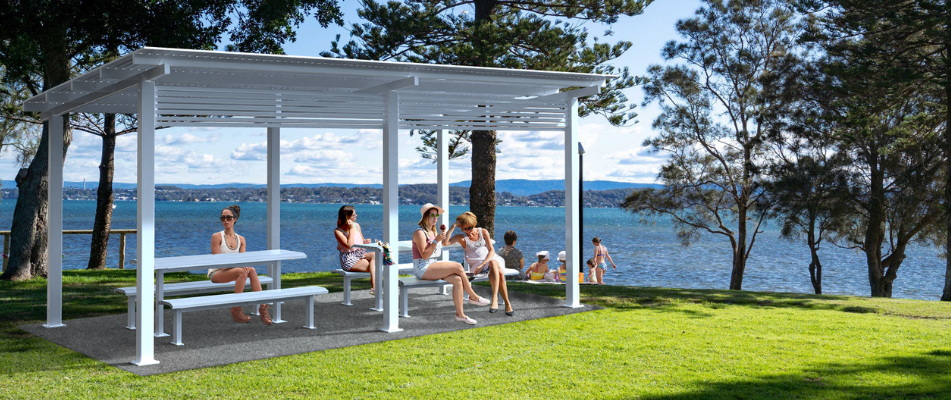Why Doesn’t Steel Last in Coastal Conditions?

Why does steel often fail to stand the test of time in coastal areas? This is a question we often encounter from our customers.
Coastal areas, with their high salt content and moisture-laden air, provide a perfect storm for accelerating the corrosion process.
Let's dive deeper into understanding why steel doesn't last as long in coastal conditions and some of the ways to mitigate it.
Corrosion: The Natural Enemy of Steel
Steel, an alloy predominantly composed of iron, is susceptible to a chemical process known as oxidation - simply put, rusting. This process occurs when iron interacts with water and oxygen, resulting in the formation of iron oxides, commonly known as rust.
The Role of Coastal Environments in Accelerating Corrosion
Coastal areas, with their high salt content and moisture-laden air, provide a perfect storm for accelerating the corrosion process. Here's how:
- Salt Content: The salty sea breeze carries tiny salt particles that get deposited on the surface of the steel. When these salt particles encounter moisture in the air and the iron in the steel, they form an electrolyte, a medium that allows a rapid electrochemical or redox reaction. Chloride ions in the salt are particularly aggressive, capable of penetrating the protective oxide layer on the steel's surface, leading to localised corrosion, known as 'pitting'.
- Humidity: Coastal areas are often high in humidity, meaning there is an abundance of moisture in the air. This increased moisture allows for the corrosion process to be facilitated more easily.
The combined effect of the high salt content and humidity creates a harsh environment for steel, leading to accelerated rusting and corrosion.
The Impact of Cut Edges and Coating Damage
Protective coatings, like zinc, galvanising or paint, are commonly applied to steel to guard it against these corrosive elements. However, these protective coatings are designed to slow down the corrosion process, not eliminate it altogether. Damage to these coatings, through cuts or scratches, can expose the underlying steel to the harsh coastal environment. These exposed areas can serve as starting points for corrosion.

Example of tea staining (not rusting)
Cut edges are especially susceptible to corrosion. A sharp corner or edge on a steel object is prone to having a thinner coating due to surface tension effects. This thinner coating can allow the harsh coastal environment to come into contact with the steel substrate, starting the corrosion process.
Mitigating Corrosion in Coastal Areas
Although it is difficult to completely prevent corrosion in coastal areas, it can be minimised through regular maintenance and cleaning. Regular rinsing with fresh water can help remove the salt deposits, slowing down the corrosion process.
Selecting the right material for the coastal environment can also help. Materials like stainless steel and aluminium are resistant to corrosion and hence might be a better choice in these situations.
While stainless steel can develop brown discolouration known as tea staining, mostly found in coastal areas, this is not rust. It's a cosmetic issue that does not impact the structural integrity or the lifetime of the material. Tea staining occurs most commonly within about five kilometres of the coast and can become progressively worse closer to the ocean.
Tea staining can often be mitigated or even removed with polishing creams or a rust converter, especially when cleaned regularly or when it first appears.
Our Warranty and Your Peace of Mind
Here's what you need to know:
For steel products located within 5km of salt water (coastal areas, etc.), our warranty does not apply. Although regular rinsing and cleaning can extend the life of products in highly corrosive salt environments, the inherent nature of carbon steel means it won't last as long as stainless steel or aluminium in these conditions.

This figure shows that the closer to the shore, the higher the corrosion rate (https://www.mdpi.com/1996-1944/10/4/406)
In conclusion, while coastal areas pose a significant challenge to the longevity of steel, understanding the process of corrosion and taking appropriate measures can help extend the lifespan of steel structures in these beautiful but harsh environments.

 Seating
Seating Benches
Benches  Curved Benches
Curved Benches Commercial Picnic Tables
Commercial Picnic Tables Concrete Plinth Mount Seating
Concrete Plinth Mount Seating Litter Bins
Litter Bins Bin Enclosures
Bin Enclosures  Shelters
Shelters Bike Parking
Bike Parking Architectural Bollards
Architectural Bollards Planter Boxes
Planter Boxes Skate Deterrents
Skate Deterrents  Drinking Fountains
Drinking Fountains Outdoor Classrooms
Outdoor Classrooms Athens Suite
Athens Suite Barcelona Suite
Barcelona Suite Berlin Suite
Berlin Suite Copenhagen Suite
Copenhagen Suite Dublin Suite
Dublin Suite Florence Suite
Florence Suite Glasgow Suite
Glasgow Suite Liverpool Suite
Liverpool Suite London Suite
London Suite Madrid Suite
Madrid Suite Manchester Suite
Manchester Suite  Milan Suite
Milan Suite Orbit Suite
Orbit Suite Paris Suite
Paris Suite Prague Suite
Prague Suite  Portsmouth Suite
Portsmouth Suite Rome Suite
Rome Suite Venice Suite
Venice Suite  Vienna Suite
Vienna Suite Woodville Suite
Woodville Suite School Furniture
School Furniture Healthcare Furniture
Healthcare Furniture Local Government Furniture
Local Government Furniture Park & Street Furniture
Park & Street Furniture Shopping Centre Furniture
Shopping Centre Furniture Aged Care Furniture
Aged Care Furniture